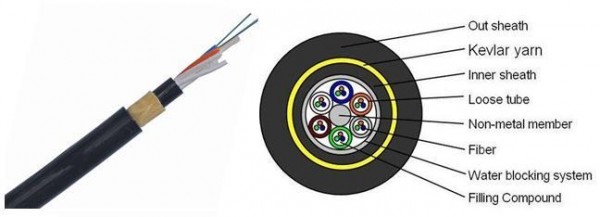In recent years, with the support of national policies for the broadband industry, the ADSS fiber optic cable industry has developed rapidly, which has been accompanied by numerous problems. In addition, domestic fiber optic cable manufacturers will face more severe challenges.

Today, GL Technology fiber optic cable manufacturer tells you five methods to test ADSS fiber optic cable failures:
1. When the resistance of the fault point is equal to infinity, it is easy to find the open circuit fault by measuring with the low-voltage pulse method. Generally speaking, pure open circuit faults are not common. Usually open circuit faults are relatively ground or phase-to-phase high resistance faults, and relatively ground or phase-to-phase low The coexistence of resistance faults.
2. When the resistance of the fault point is equal to zero, it is easy to find the short-circuit fault by measuring the short-circuit fault with the low-voltage pulse method, but this kind of fault is rarely encountered in actual work.
3. When the resistance of the fault point is greater than zero and less than 100 kilohms, it is easy to find the low-resistance fault by measuring with the low-voltage pulse method.
4. The flashover fault can be measured by the direct flash method. This fault generally exists inside the connector. The resistance of the fault point is greater than 100 kiloohms, but the value changes greatly, and each measurement is uncertain.
5. High-resistance faults can be measured by flash-flash method, and the resistance at the fault point is greater than 100 kilohms and the value is determined. Generally, when the test current is greater than 15 mA, the test waveforms are repetitive and can overlap, and a waveform has one emission, three reflections and the pulse amplitude gradually decreases, the measured distance is the distance from the fault point to the cable test end; otherwise Test the distance from the fault point to the opposite end of the cable.
To improve the technical level of optical cable fault testing, different methods should be adopted for different fault properties, and new technologies and equipment should be continuously introduced. At the same time, new equipment should be explored for experience and new functions should be developed. For example, the current testing technology of sending audio signals to optical cables and receiving signals at the fault point, and the use of the SDC series of high-intelligent cable fault flash testers using T16/910 cable fault testers to accurately locate the fault points. These devices can control the measurement error within a few tens of centimeters, directly find the fault point for processing, and improve the efficiency of fault detection.
Media Contact
Company Name: Guang Lian
Contact Person: Media Relations
Email: Send Email
Phone: +86 7318 9722704
Country: China
Website: https://www.gl-fiber.com/
